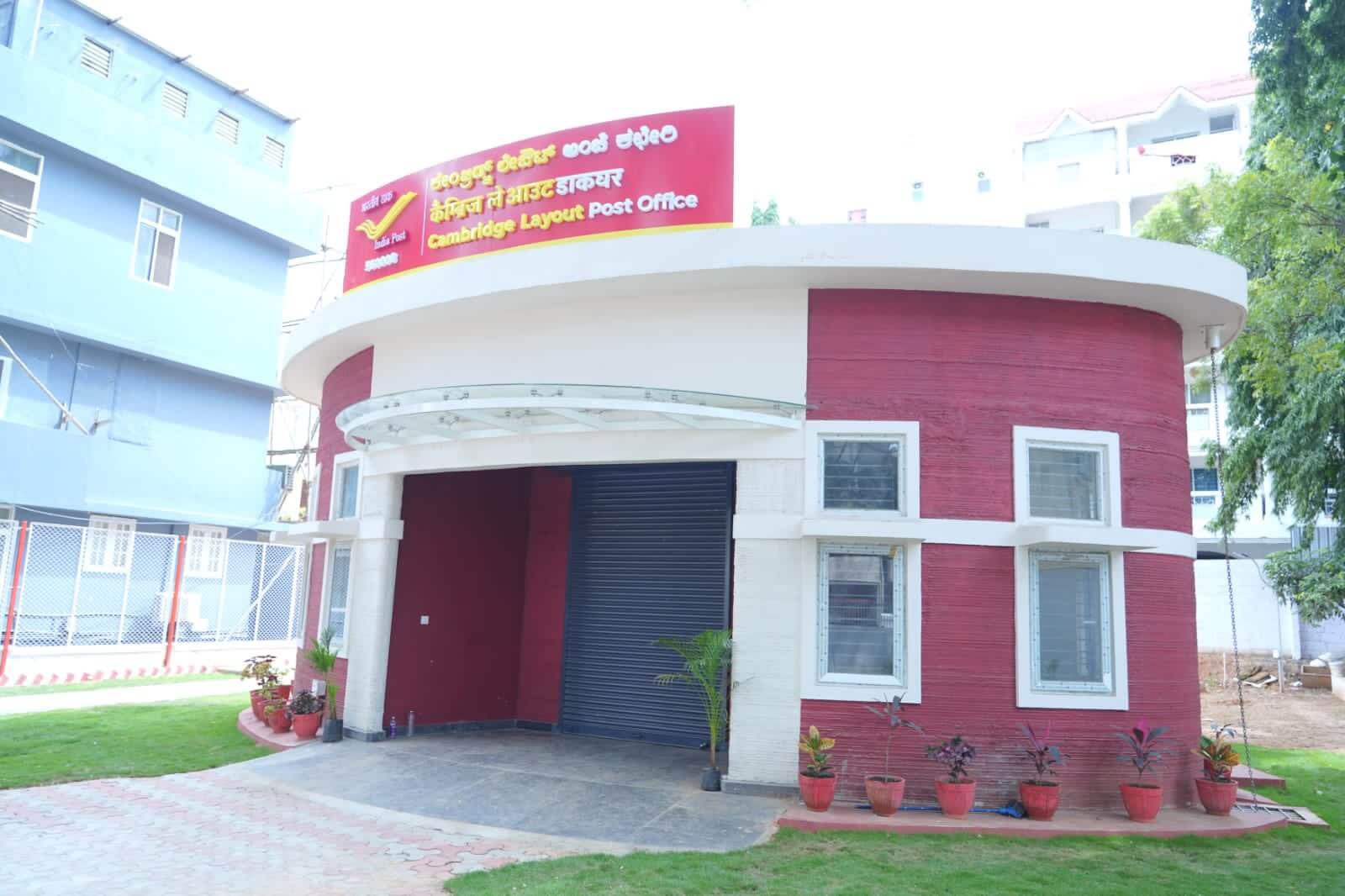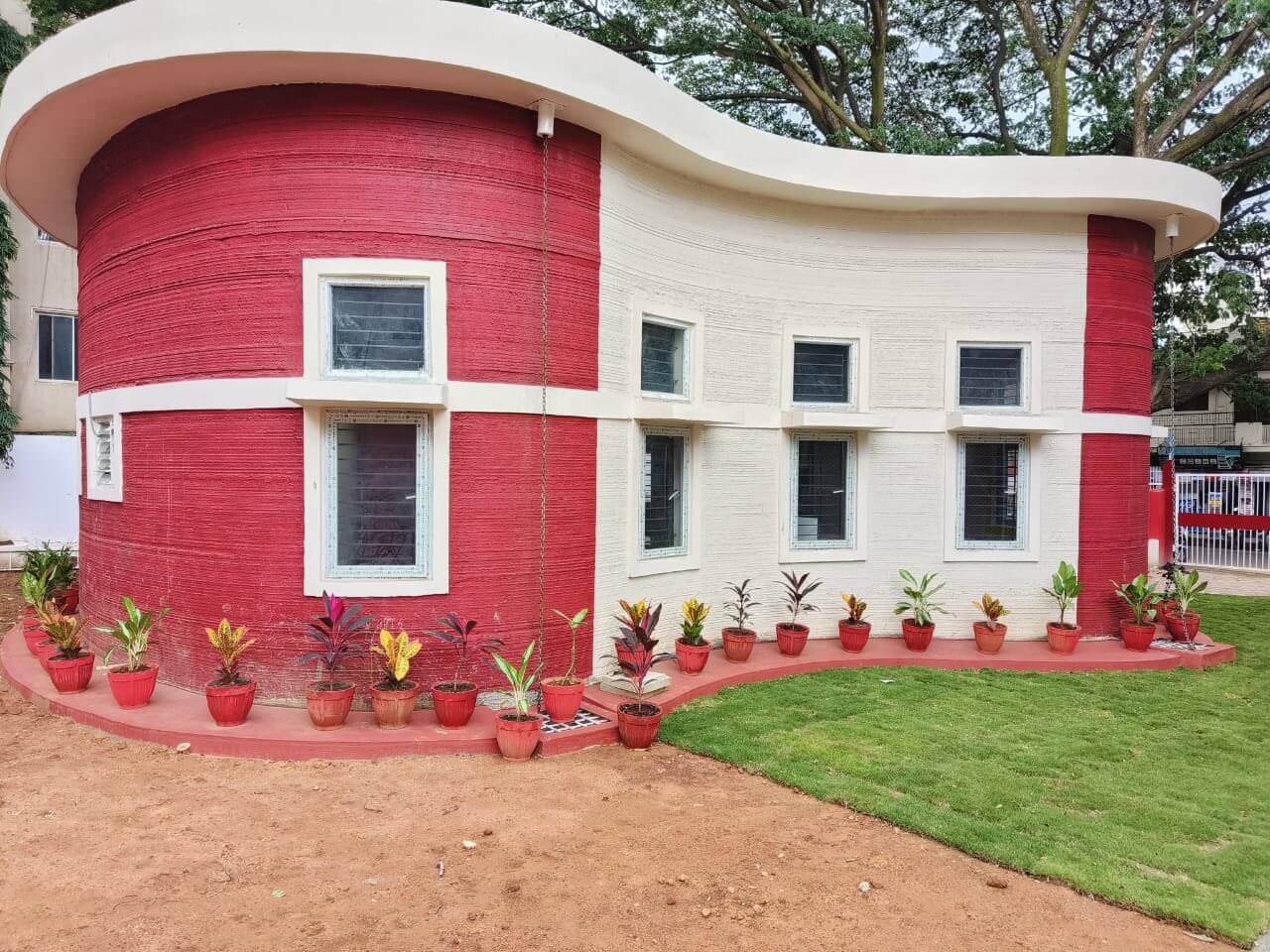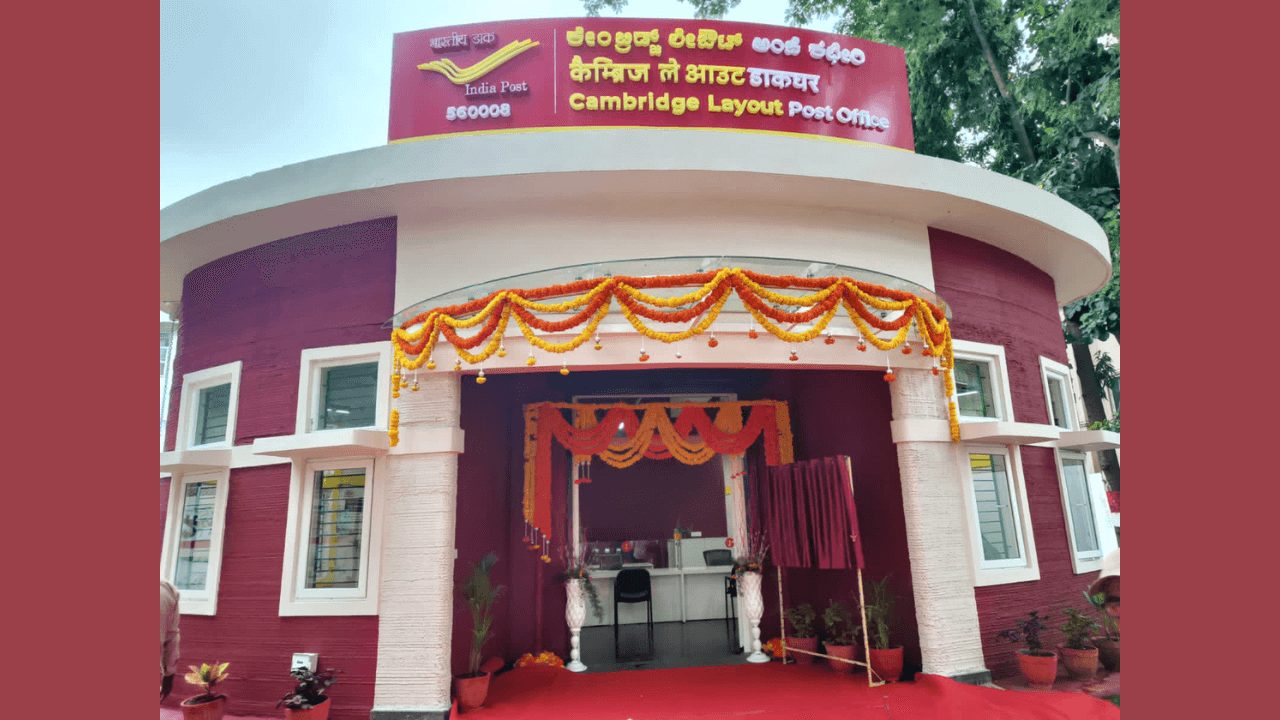On Friday, Union Minister for Railways, Communications, Electronics, and IT, Ashwini Vaishnaw, virtually inaugurated India’s first 3D Printed post office situated in Bengaluru’s Cambridge Layout. He shared a video of the post office’s 3D printing process on his social media handles.
More About India’s First 3D Printed Post Office
Construction
- The pioneering 3D-printed post office was successfully constructed in just 43 days, surpassing its original deadline by two days.
- The construction was accomplished by Larsen & Toubro Limited, with technical collaboration from IIT Madras, guided by Professor Manu Santhanam from the Building Technology and Construction Management Division of the Department of Civil Engineering.
Method/Technique
- Spanning an area of 1,021 square feet, the post office was built using cutting-edge 3D concrete printing technology.
- This innovative approach involves an automated process where a robotic printer deposits layers of concrete according to the approved design.
- Specially formulated quick-hardening concrete was used to ensure strong bonding between the layers during the printing process.
Thanks to the robotic precision and pre-embedded designs, the entire construction was completed in just 43 days, a remarkable achievement compared to the conventional method which typically takes around 6 to 8 months.
Cost
Moreover, this groundbreaking project was also cost-effective, with a total expenditure of ₹23 lakhs, marking a significant reduction of approximately 30-40% compared to traditional construction methods.
3D Printing Technology
The successful implementation of the 3D-printed post office highlighted several critical aspects of concrete 3D printing technology. This innovative project was primarily driven by indigenous machines and robots, showcasing the potential for future scalability. The specialized concrete material utilized in the construction possessed essential qualities such as pumpability, extrudability, and buildability, coupled with robust mechanical properties.


Unique Features of the Project
- A notable feature of the project was its absence of vertical joints, with the entire perimeter being continuously printed.
- The 3D printing technology, originally imported from Denmark for this venture, demonstrated impressive flexibility by accommodating curved surfaces and adapting to various site dimensions.
- This adaptability eliminated the constraints of traditional flat walls.
- The technology allowed for the creation of continuous reinforced concrete footing and three-layer walls, with the outer layers printed using concrete and the central layer reinforced with concrete.
- This innovative approach significantly reduced the construction timeline to a mere 43 days, an impressive feat compared to traditional methods, while also minimizing material wastage.
One of the standout advantages of 3D printing is its capacity for individual customization of structures, a trait with immense potential in housing-related construction. This technology also facilitates the integration of weather-proofing features and utilities directly within the walls, enhancing construction efficiency. As a result, high-quality dwellings can be created virtually anywhere, including challenging terrains, making it a game-changer in the realm of construction.
- Weekly Current Affairs 2025 PDF For Bank, SSC, UPSC Exams
- Unsung Heroes of India: 10 Unknown Freedom Fighters You Should Know
- 26 December Current Affairs 2023 in English
- Daily Current Affairs 2025, Check Today’s Current Affairs
- April Month Current Affairs 2024, Download PDF
- June Month Current Affairs 2024, Download PDF

Hello, I’m Aditi, the creative mind behind the words at Oliveboard. As a content writer specializing in state-level exams, my mission is to unravel the complexities of exam information, ensuring aspiring candidates find clarity and confidence. Having walked the path of an aspirant myself, I bring a unique perspective to my work, crafting accessible content on Exam Notifications, Admit Cards, and Results.
At Oliveboard, I play a crucial role in empowering candidates throughout their exam journey. My dedication lies in making the seemingly daunting process not only understandable but also rewarding. Join me as I break down barriers in exam preparation, providing timely insights and valuable resources. Let’s navigate the path to success together, one well-informed step at a time.






